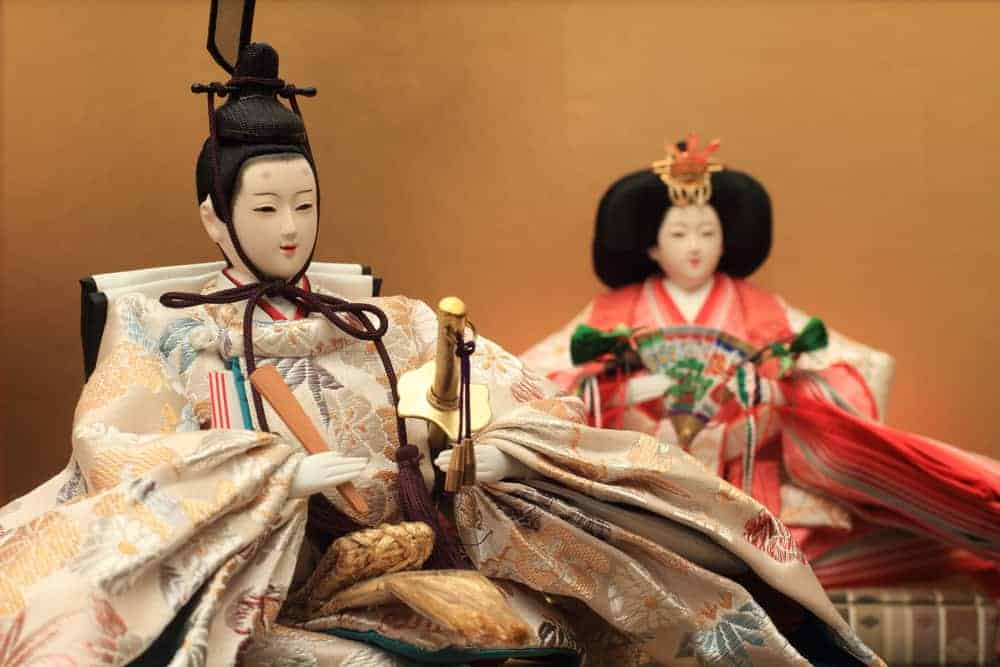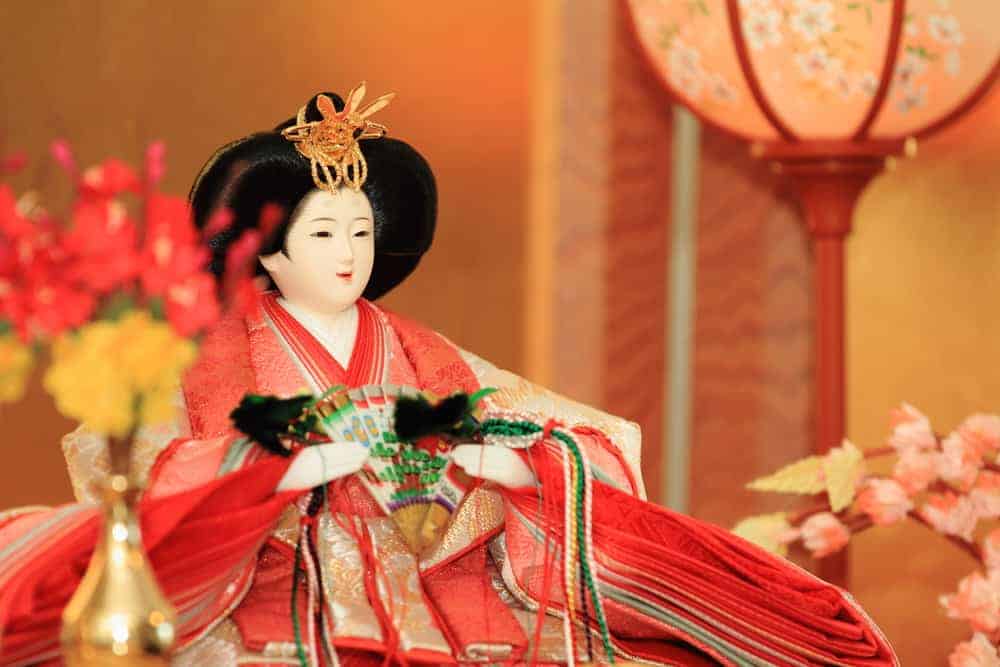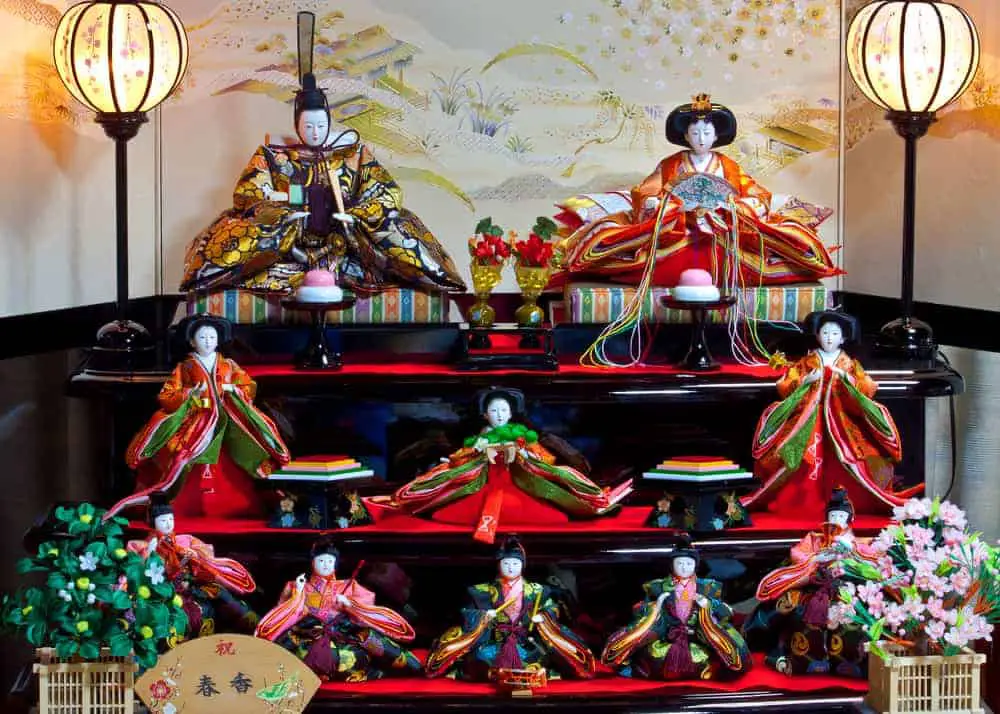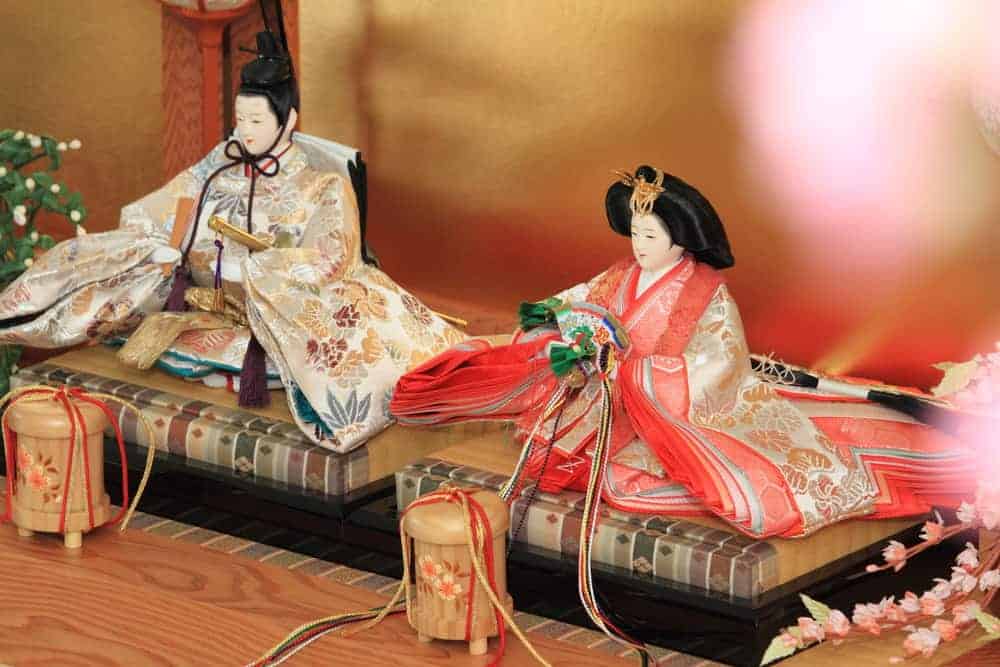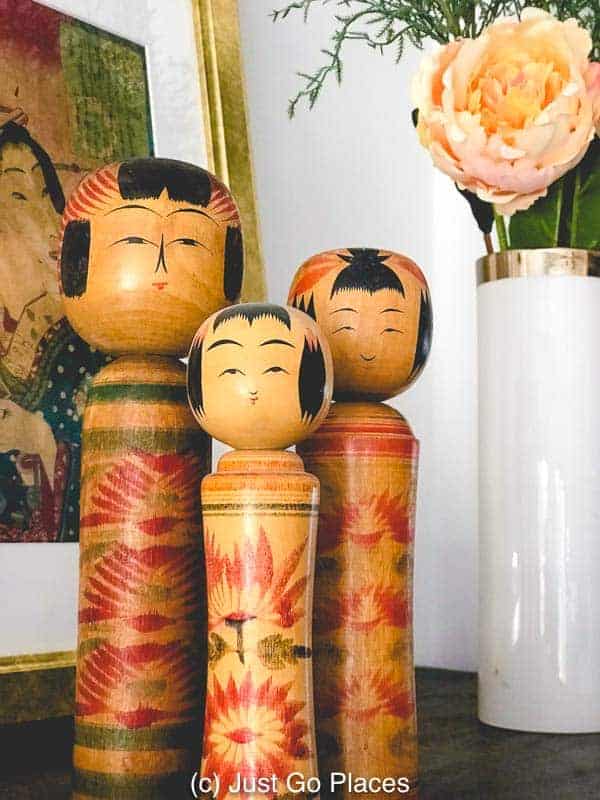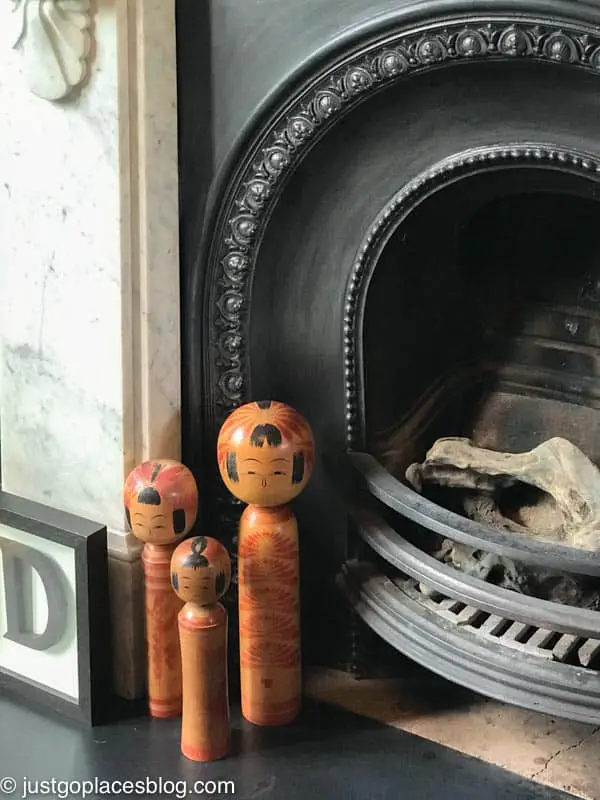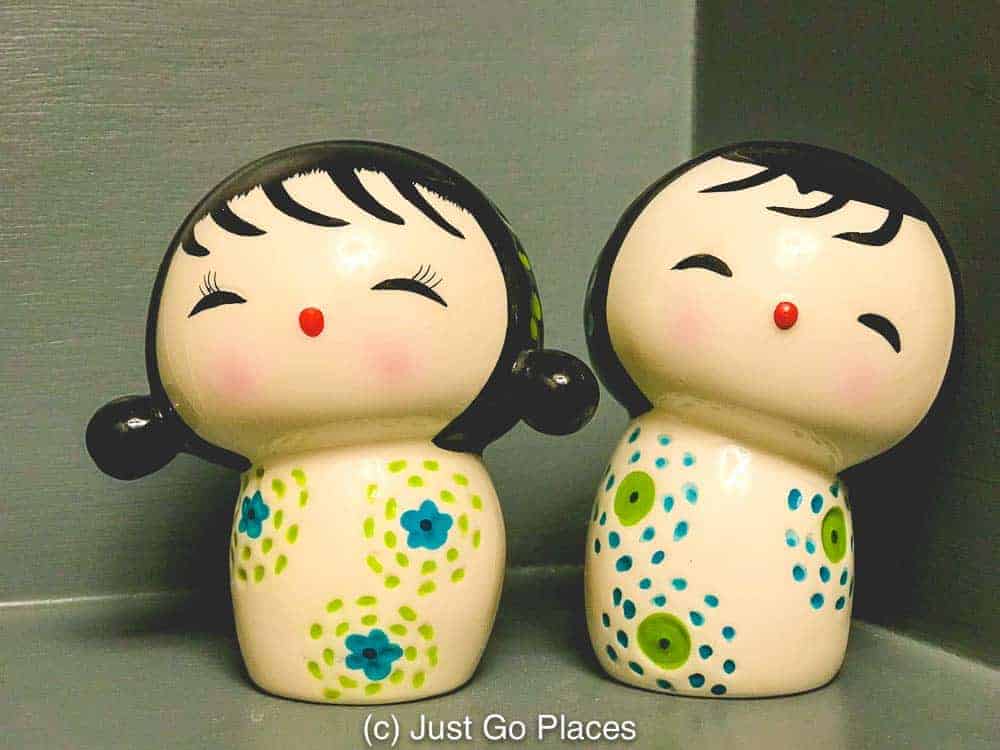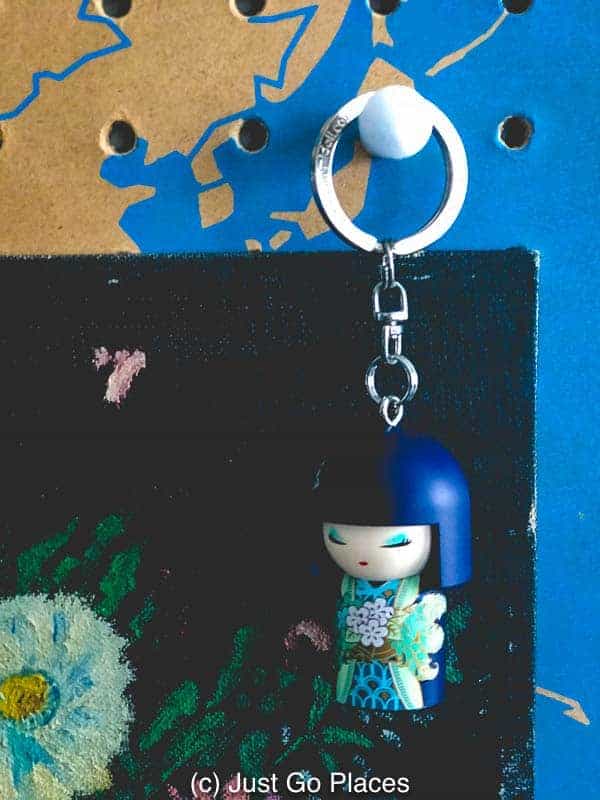When you are travelling in Japan, you see lots of antique Japanese dolls for sale. These dolls are a relatively affordable souvenir even if they are Japanese porcelain dolls. Sure they aren’t as cheap as a Chinese-made fridge magnet but they are way also way cooler and have a cultural significance. The most elegantly beautiful vintage Japanese dolls we found were the Hina dolls from the Hinamatsuri festival celebrated on March 3rd every year. Alternatively, the folk art chic of Japanese wooden dolls may better fit your modern aesthetic.
Contents
The Hina Dolls
The Hina dolls are associated with Hinamatsuri in Japan, a festival that ensures the healthy growth of a daughter.
What is the Hinamatsuri Festival?
The Hinamatsuri festival is a girls’ day celebration on the 3rd of March. Hinamatsuri in Japan is celebrated for daughters until their 10th birthday.
Each family brings out their Hinamatsuri doll set which is a series of dolls placed on a red tiered carpet. Yes, the dolls have a hierarchy too. There will always be a man and a woman on the top tier of Hinamatsuri dolls which is supposed to represent the Emperor and Empress.
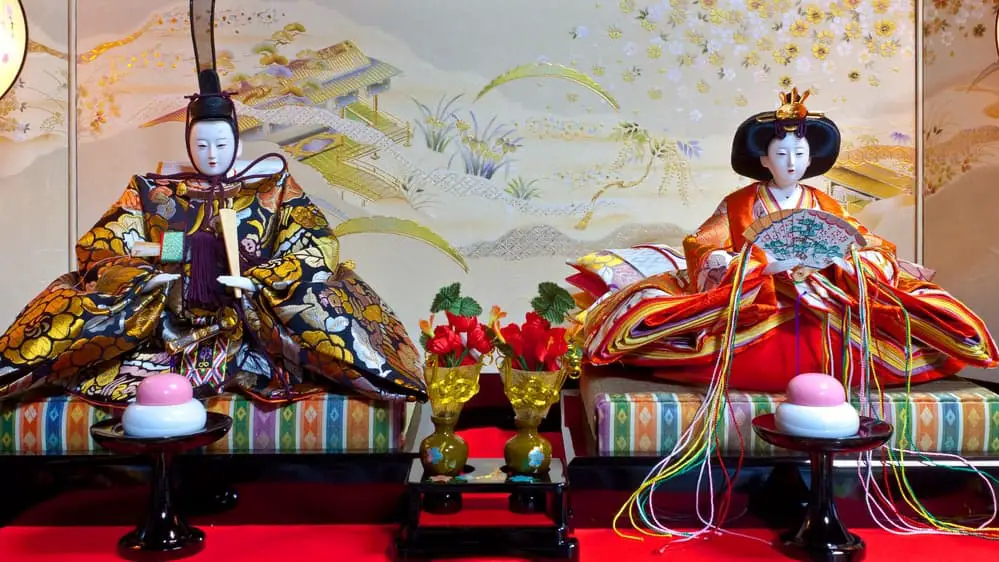
At the top of the Hinamatsuri doll set are representation of the Emperor and Empress, representing the hierarchy in society as well.
The Hinamatsuri festival has a macabre origin story. The legend goes that one of the mythical founders of Japan (sort of like Romulus and Remus for Rome) purified himself after visiting the Land of the Dead. This purification used to include human sacrifice. During the Heian period though, ritual purification could be done by transferring your issues to a doll and throwing it in the river or sea.
The Nagashi Bina Festival which is more like the Heian period festival of transferring uncleanliness onto a doll is still celebrated in some places, including the Shimigomo Shrine in Kyoto.
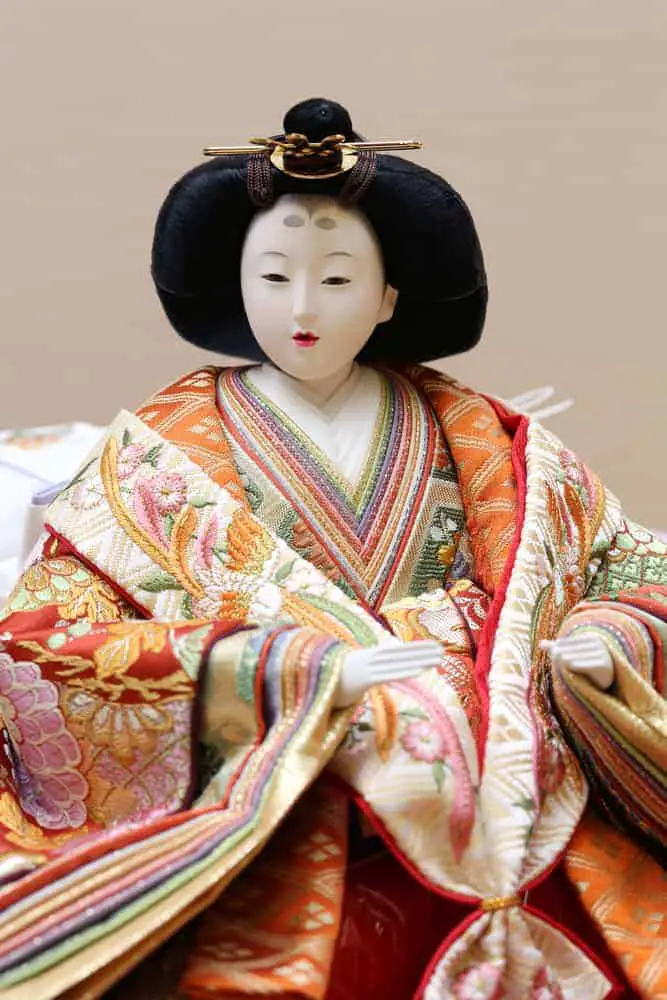
Hinamatsuri dolls wear traditional outfits from the Heian period, widely regarded as a glorious period in Japanese cultural history.
By the late 17th century, the Nagashi Bina festival transformed into the Hinamatsuri festival which is widely celebrated today in Japan.
The Hinamatsuri Doll Set
Usually a family gets the first two dolls (the Emperor and the Empress) of a Hinamatsuri doll set by the first birthday of their child. You don’t need to have any more Hina dolls because that is the basic set. The dolls are offered little food offerings and sake. We discovered that Shintoism in Japan seems to love sake offerings!
They Hina dolls are displayed for only a brief time because of the superstition that if you left them up too long they would be responsible for the daughter’s late marriage. Heaven forbid.
How many more tiers of dolls you have depends on how much money you have. A Hinamatsuri set ranges from 5-7 tiers with 15 dolls.
Below is a 3-tier Hinamatsuri doll set which has the Emperor and Emperess and their courtiers and musicians in traditional court dress from the Heian period.
A Hina doll is expensive to buy new. For example a full 5 tier set of Japanese porelain dolls can cost a couple of thousand US dollars. Usually families pass down the Hinamatsuri doll set from generation to generation.
Why Are Second Hand Hina Dolls Affordable?
You can, however, get a Hina doll fairly cheaply in second-hand stores. Antique Japanese Hina dolls are not bought by Japanese families. Dolls are supposed to take on human characteristics by virtue of looking like humans. It’s fine to inherit your doll from your family members but you will invite bad spirits into your home if you bring a stranger’s Hina dolls into your home!
My daughter thought they were beautiful until she heard the superstition about them having spirits of their own. Then she just thought they were creepy.
So there are lots of Japanese antique dolls floating around Japan that no longer belong to a family. It’s not like you can throw them out because that would really bring the reign down the wrath of a Japanese spirit. (Remember the Japanese horror movie, The Ring? No one wants that). So, these Japanese antique dolls get flogged to foreigners who appreciate them for their beauty and don’t have the attendant superstitions associated with them.
I did buy two vintage Japanese dolls before I learned about the legend and my daughter got spooked. Unfortunately, one of the Hina dolls lost his head somewhere in transit. The Japanese spirit associated with my headless Hina doll is probably very annoyed but has yet to pay me a visit. Sort of like the legend of the Headless Horsemen of Sleepy Hollow, he’s probably still out there searching for his head (somewhere in baggage claim).
Kokeshi Dolls
Kokeshi dolls are simple wooden Japanese dolls that originally started in the Northeast of Japan.
Farmers made these Japanese wooden dolls from scraps of wood to wile away the time during the winters. Kokeshi Japanese dolls were probably a good luck symbol.
Then kokeshi dolls got sold as souvenirs to people visiting the onsens (hot springs) in the area in the early 1800’s during the Edo Period. Eventually they also became a toy for children. Sometimes a Kokeshi doll was given to a woman who had lost a baby through miscarriage or abortion.
Unlike the Hina dolls, the Kokeshi dolls meaning were believed to be a good luck charm. They were both a guardian of children’s souls but also able to contain the spirits of ancestors. Personally, I would have thought that was just as creepy.
There is a Kokeshi Museum in Osaki City which has about 5000 Japanese kokeshi dolls on display.
Vintage Kokeshi Dolls
The vintage kokeshi dolls you will find are super-simple. They have a hand-drawn face, no arms and legs, and a floral design on the body. There are apparently 11 different types of Kokeshi patterns which are associated with different onsens. You may find the artist’s signature on the bottom of a Kokeshi doll.
Simple as they are, Kokeshi dolls take a long time to make because the wood is left outside to age for up to 5 years. The wood used can be cherry, dogwood, chestnut or Japanese maple. They are always made of wood, hand-carved andhand-painted.
You are basically looking for a Kokeshi doll that is pleasing to the eye. You want one that is not too top heavy and has a nice pattern. We saw some that my daughter classified as having “weird” faces but really it is a personal preference.
Modern Kokeshi Dolls
Modern kokeshi dolls appeared in the 1950’s and are more colorful and artistic. Artists were allowed more freedom to express their creativity unlike in the vintage kokeshi dolls. Also called creative kokeshi dolls, the body is painted wearing clothes like kimonos or yukatas. Unlike the vintage kokeshi dolls, modern kokeshi dolls can be made on special machines (but are still handprinted).
Kimmidoll Collection
The Kimmidoll collection takes the modern kokeshi dolls even further away from the traditional types. Inspired by Kokeshi dolls, Japanese kimmidolls contemporary collectible dolls. Kimmidolls are a mass-market approach to a Japanese tradition. They aren’t as charming as a the aged look of vintage Japanese dolls in my opinion but my daughter thought they were super pretty.
Each Kimmidoll represents a positive characteristic e such as laughter, understanding, love or entertainment. We got our Kimmidoll keychain at Kiddyland, a Japanese toy superstore in the Ometesando neighborhood near Harajuku.
SPREAD THE WORD! PIN THIS TO YOUR TRAVEL PINTEREST BOARDS FOR FUTURE REFERENCE!
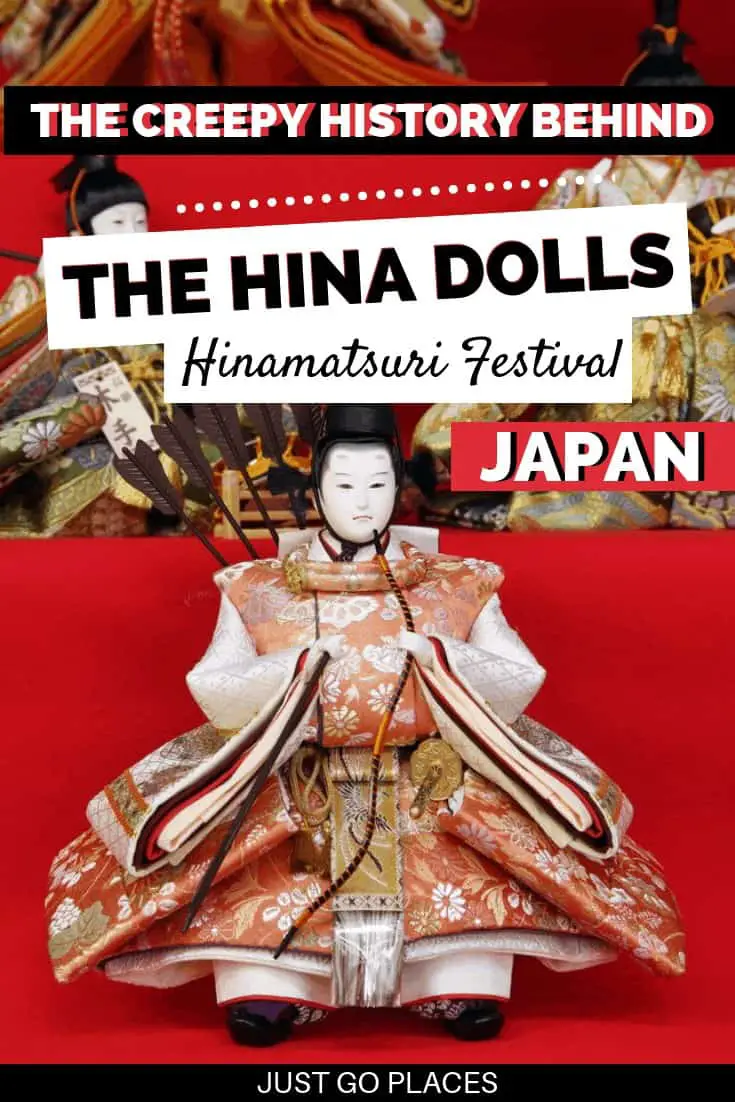
Hinamatsuri dolls make cool Japanese souvenirs but they do have a creepy legend associated with them.
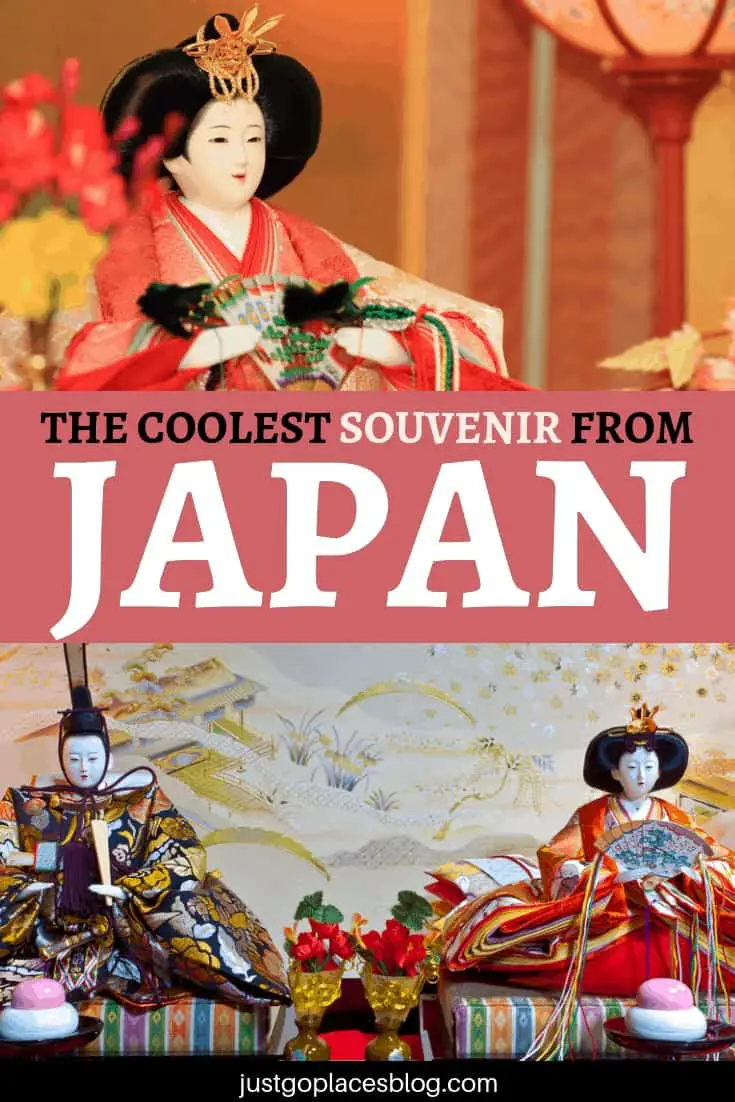
Finding the perfect souvenir from Japan can be a hard task. So much choice for gifts from
Japan! I love the vintage and antique Japanese dolls that you can find for sale in Japan. The
most beautiful I found are the Hina dolls display from the Hinamatsuri festival. Discover why
these dolls make the perfect souvenir! #dolls #hinamatsuri #festival #japan #japanese
This site generates income via partnerships with carefully-curated travel and lifestyle brands and/or purchases made through links to them at no extra cost to you. More information may be found on our Disclosure Policy.

